 AP Lit is a different beast from most AP classes, since there isn’t a study guide of names, dates, events, or what have you that you should review. However, there are some things you can do to help you face the exam with confidence. First, gather your materials. Have your class portfolio, poetry journal, and copy of Sound and Sense handy.
AP Lit is a different beast from most AP classes, since there isn’t a study guide of names, dates, events, or what have you that you should review. However, there are some things you can do to help you face the exam with confidence. First, gather your materials. Have your class portfolio, poetry journal, and copy of Sound and Sense handy.
Multiple Choice
Review your sets of practice questions, paying attention to the types of questions being asked. Many of the questions ask you to relate selected words or phrases with others in the passage or poem, so this is where you unpack your syntactical skills from AP Lang class. Pay attention to punctuation—it will often reveal relationships among the words, phrases, and sections.
Quick Tips:
- Scan the question stems and bracket any specified lines stated in the questions before reading the poem or passage.
- Don’t overthink things, smart people. You’re pressed for time, so go with your first, best instinct.
- If you can eliminate at least two of the possible choices for a question, it’s better to go ahead and guess on the answer. If you’re truly stuck, skip it and move on.
- If you skip questions, pay close attention to where you are on the answer sheet. Getting off by one can really screw things up.
- Watch your time. Remember the one-minute rule for passages: each passage and question set should take the same number of minutes as the number of questions, plus one minute; i.e. allow thirteen minutes for a twelve-question set.
- If you get down to the last minute or so and still have unanswered questions, then it’s okay to begin singing. (“O Christmas tree, O Christmas tree, I think I’ll mark this answer ‘E.'” Or B. Or what have you.) There is no penalty for an incorrect answer, but you will accumulate points for those last minute lucky guesses.
Free Response
Remember that the ultimate goal for all of the writing prompts is to reveal your understanding and analysis of the work, passage, or poem in question. Summary is not required! Really. The AP readers assigned to the poem and prose prompts basically have them memorized by the end of the second day of the reading, and the ones on Q3 are most likely teachers or college professors who really don’t need to have the plot of The Great Gatsby or Romeo and Juliet explained to them. Especially that one professor from the Ivy League school who wrote her dissertation on Fitzgerald, or the gentleman who’s taught R&J to his freshmen classes every year for the past decade. Yes, those kinds of people read AP exams.
To avoid this, my friend and AP colleague Skip Nicholson suggests that when you write, try pulling examples from different parts of the work, but don’t present them in order. As he says, “If students begin at the start of the work, you can be sure the next detail will be whatever follows in the text, and the Great Tide of Retelling is on the way to carrying them into the Brown Swamp of Plot Summary for novels or the Murky Pools of Paraphrase for poetry. There be dragons there.”
Q 1 – Poetry
Review the poems you selected for your journal, keeping in mind the focus of the selected chapter in Sound and Sense. Each poetry prompt asks you to relate the poet’s techniques with the overall meaning or theme of the poem itself. Reread some of the poems you annotated and see how those annotations help build to a theme. Practice on some of the additional poems for study to sharpen your skills.
Quick Tips:
- Titles of poems go in quotation marks: “Song of Myself” “Dulce et Decorum Est”
- The voice presented in a poem belongs to the speaker, not the narrator.
- Tone is a vital part of any discussion of poetry! Make sure you address tone in your commentary.
- Pay attention to shifts—in tone, in style, in rhyme. They often accompany shifts in meaning.
- Don’t arrange your essay by device! Instead, talk about how the poem presents meaning as you work from beginning to end, discussing important devices like word choice, imagery, etc. as you go.
Q 2 – Prose
The prose passages ask you to focus on evidence for a particular theme, stance, or point of view. Often they will ask about how a character is being presented and ask you to select the specific evidence from the passage to support your reading of the piece. Review your previous attempts at Q2 and see how you’re doing with using specific textual evidence as support.
Quick Tips:
- Read the prompt carefully! Be sure you are addressing all parts of the prompt.
- Remember that any list of techniques presented is usually a suggested list; you may choose to discuss some, all, or none of those techniques, depending on the wording of the prompt.
- Relate any specific technique you select back to the meaning or thrust of the passage as a whole. Don’t be a tour guide shouting “Hey, look! A metaphor!” without explaining why that metaphor is important or how it connects to a larger idea.
- Again, don’t organize your essay by device. Consider what the prompt is asking about characterization or what have you and show how that builds from beginning to end, weaving in appropriate devices as you go.
Q 3 – Open
Here’s where all those Six Pack Sheets will come in handy! Question 3 is truly an open question. As we discussed in class, Q3 will list suggested works, but you are not required to select one of those works as your response. You may select any work that you believe you can use confidently and that will help you craft as detailed and thoughtful a response as possible. My advice is that you select six works to review so that you will have names and specific details handy. From your class folder or laptop, find all of your Six Pack Data Sheets. Pull the foldables we made for Light in August and Their Eyes Were Watching God. You will also need your Window Notes pages from the Literature Circles (play and novel). These should represent all of the works we studied during this year together in AP Literature. From all of the works, select your top six. These do not have to be the six you like the best! Consider a range of time periods; include some historical works in addition to modern ones. Think about the various points of view, style, and settings represented by the works as you select your six pack. Once you have chosen your six pack, review the information in the appropriate Six Pack Sheet, foldable, or set of Window Notes. Check this website for posts about the works—use the search feature or the tags to go directly to posts about the works in your six pack. Review the Canvas discussion boards for each work. Skim SparkNotes (yes, this is what they were made for!) to remind yourself about character names and plot details. Think carefully about theme/MOWAW you have recorded on your Six Pack Sheets and decide what details within the texts support your ideas.
Quick Tips:
- Titles of these works should be underlined since you can’t create italics with handwriting. No quotation marks. Ever.
- Resist the urge to retell the story. The person reading your essay is probably familiar with the work and doesn’t need you to retell the plot. Refer to incidents as if you’re having a conversation with someone who read it along with you.
- Avoid the phrase “meaning of the work as a whole” by substituting what you think that meaning/theme is. You’ll sound instantly smarter—and the essay will be more powerful as a result.
Whether you believe it or not, you’re ready. You’ve done the readings, we’ve discussed, you’ve written. You know what you need to do in order to succeed. Now go in there and make it happen!
Good luck on the exam. I’m proud of all you’ve accomplished.



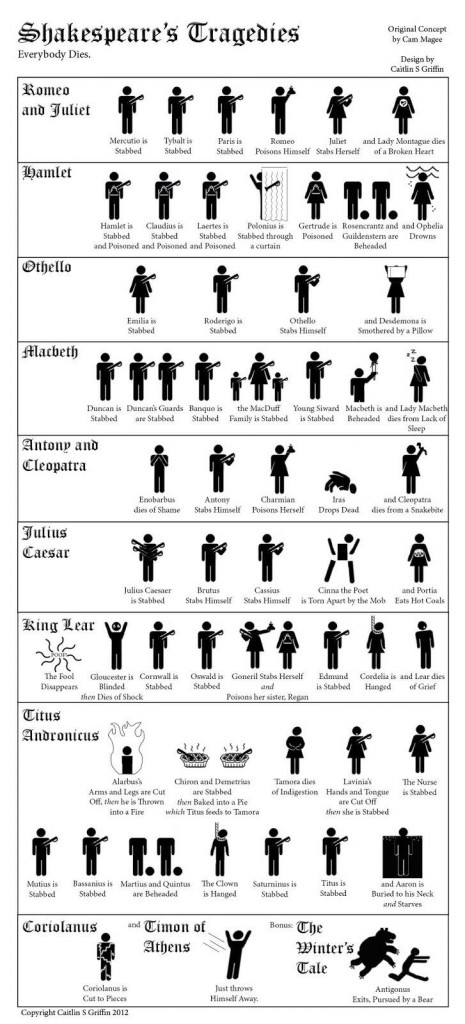
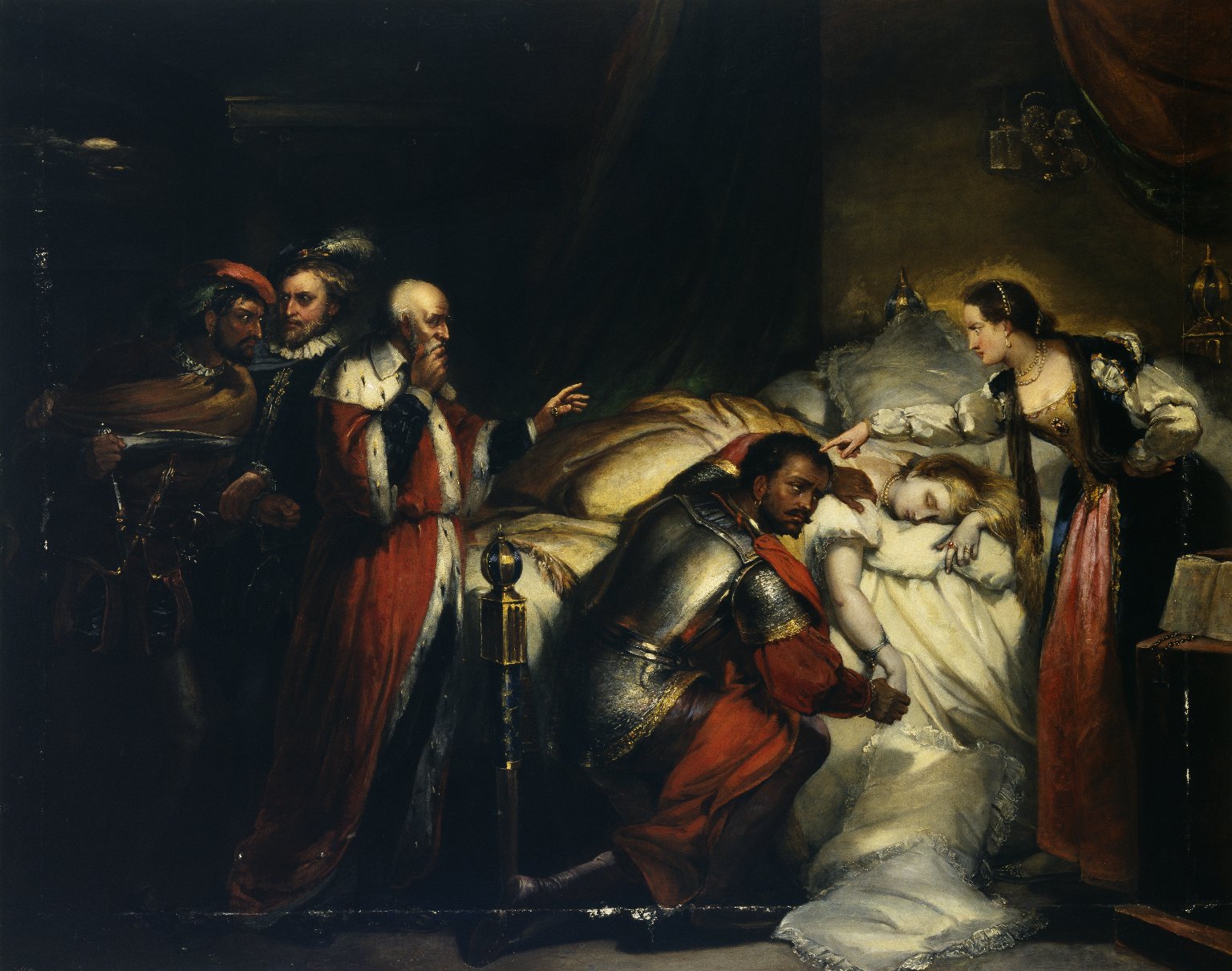
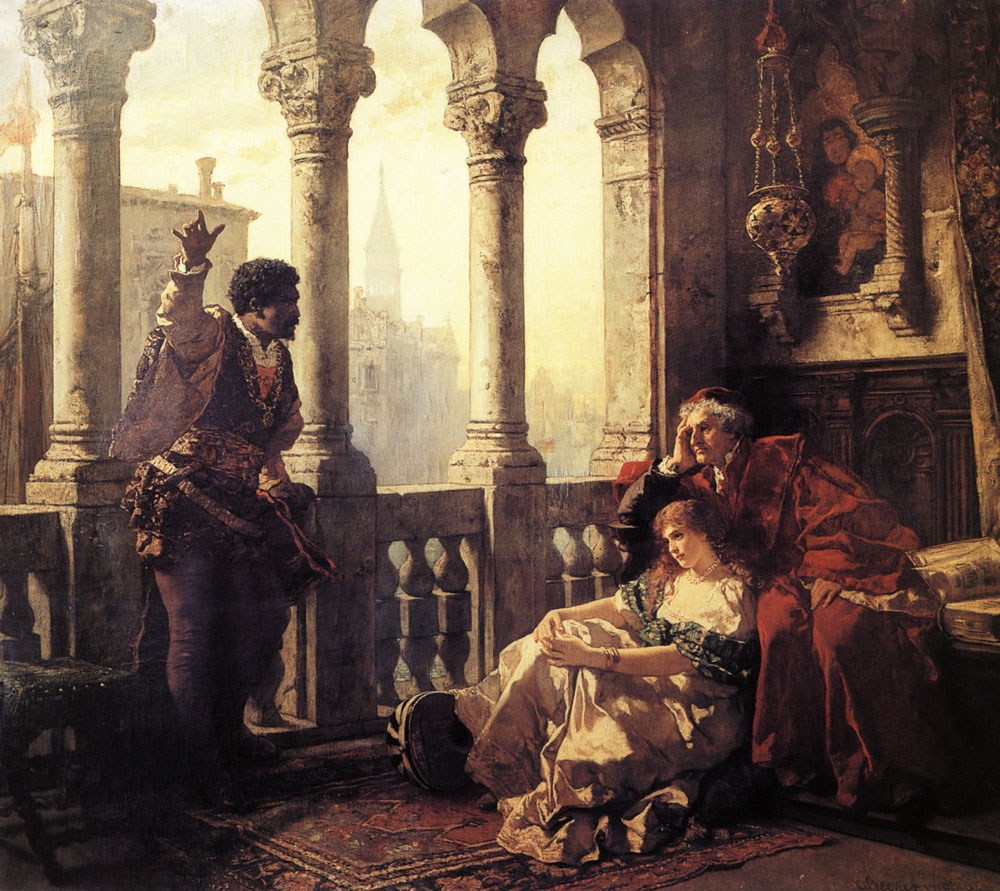
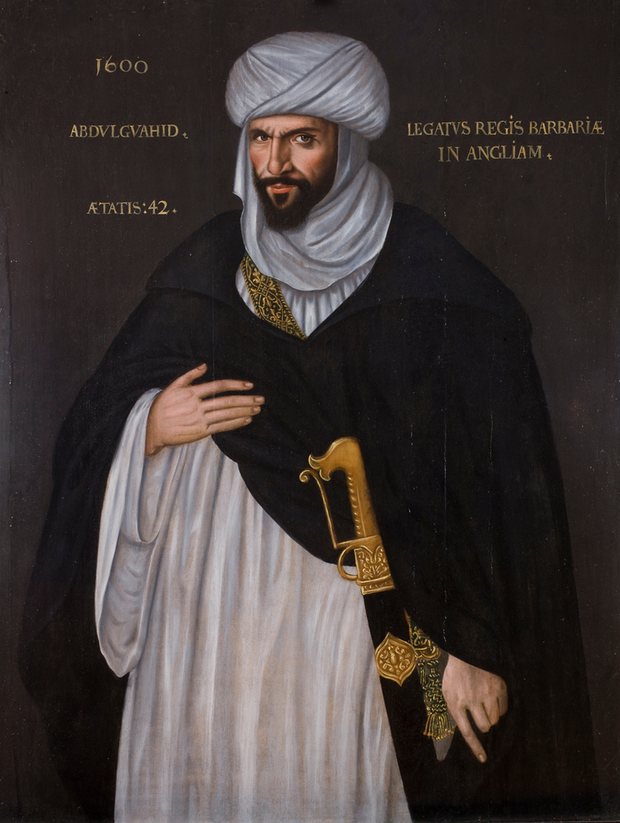
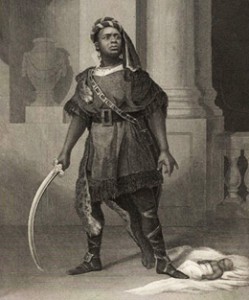
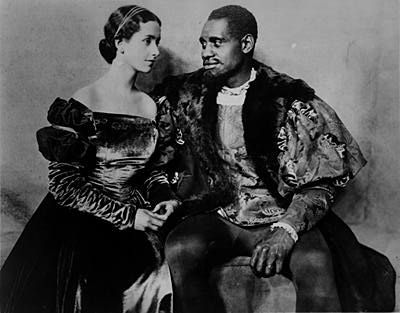 Perhaps the best-known Othello in the United States is the renowned actor Paul Robeson. The son of an escaped slave, Robeson had built an international reputation not only from his role in the musical Show Boat, but as an athlete and an attorney. Robeson had a commanding physical presence that suited the role perfectly, but his casting against the young British actress Peggy Ashcroft in 1930 was not without controversy. Technical issues like poor staging and difficult acoustics made performing difficult. But no one argued with the power of Robeson’s performance. Ivor Brown, the critic for The Observer, described Robeson as “… an oak…a superb giant of the woods for the great hurricane of tragedy to whisper through, then rage upon, then break.” Audiences at the premiere gave Robeson twenty curtain calls. But, given the societal segregation of the time, Robeson had detractors as well who criticized everything from his interpretation of the role to how he pronounced the words of Shakespeare’s text. Samantha Ellis writes:
Perhaps the best-known Othello in the United States is the renowned actor Paul Robeson. The son of an escaped slave, Robeson had built an international reputation not only from his role in the musical Show Boat, but as an athlete and an attorney. Robeson had a commanding physical presence that suited the role perfectly, but his casting against the young British actress Peggy Ashcroft in 1930 was not without controversy. Technical issues like poor staging and difficult acoustics made performing difficult. But no one argued with the power of Robeson’s performance. Ivor Brown, the critic for The Observer, described Robeson as “… an oak…a superb giant of the woods for the great hurricane of tragedy to whisper through, then rage upon, then break.” Audiences at the premiere gave Robeson twenty curtain calls. But, given the societal segregation of the time, Robeson had detractors as well who criticized everything from his interpretation of the role to how he pronounced the words of Shakespeare’s text. Samantha Ellis writes: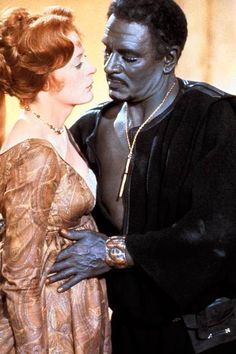 Despite the positive reception of an African-American actor in the role, the Oscar-nominated 1965 production (the highest number for a Shakespeare film in history) starring Sir Laurence Olivier and a very young Dame Maggie Smith as Desdemona reverted to type: The famous English actor played the role in makeup. This was the first cinematic Othello to be shot using color film, and Oliver was as meticulous about that as he was about developing the physical character through a deep voice and a special walk. He stated in an interview with Life magazine in 1964 that, “
Despite the positive reception of an African-American actor in the role, the Oscar-nominated 1965 production (the highest number for a Shakespeare film in history) starring Sir Laurence Olivier and a very young Dame Maggie Smith as Desdemona reverted to type: The famous English actor played the role in makeup. This was the first cinematic Othello to be shot using color film, and Oliver was as meticulous about that as he was about developing the physical character through a deep voice and a special walk. He stated in an interview with Life magazine in 1964 that, “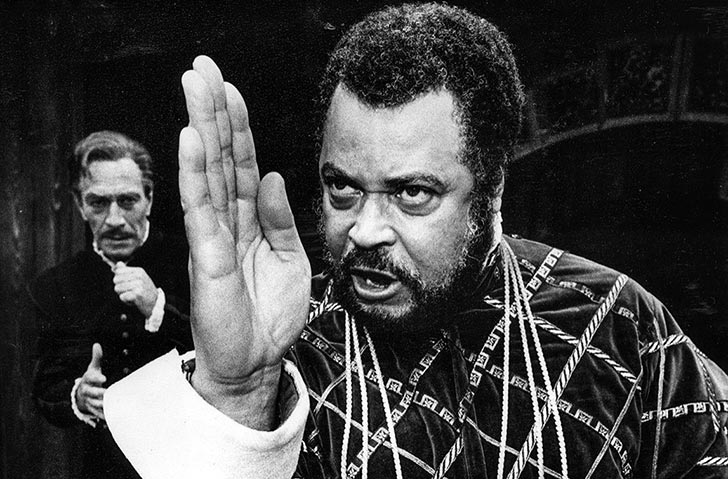 Perhaps the pushback against the Olivier production opened the door for the now generally-accepted casting of an African-American actor in the role. Famous Othellos of the last several decades include theater luminaries like James Earl Jones, Oscar-nominated actor Laurence Fishburne in a stellar 1995 production starring Kenneth Branagh as Iago and French actress Irene Jacob as Desdemona, and young actor Mekhi Phifer in “O,” a contemporary version that transforms the military conflict into a basketball rivalry set in a high school. Other famous actors who have played Othello include Orson Welles, Sir Anthony Hopkins, Chiwetel Ejiofor, and Eamonn Walker in a 2001 TV movie co-starring Christopher Eccleston (best known as the ninth Doctor Who) as Iago, which transplants the action from Venice and Cyprus to a London police station.
Perhaps the pushback against the Olivier production opened the door for the now generally-accepted casting of an African-American actor in the role. Famous Othellos of the last several decades include theater luminaries like James Earl Jones, Oscar-nominated actor Laurence Fishburne in a stellar 1995 production starring Kenneth Branagh as Iago and French actress Irene Jacob as Desdemona, and young actor Mekhi Phifer in “O,” a contemporary version that transforms the military conflict into a basketball rivalry set in a high school. Other famous actors who have played Othello include Orson Welles, Sir Anthony Hopkins, Chiwetel Ejiofor, and Eamonn Walker in a 2001 TV movie co-starring Christopher Eccleston (best known as the ninth Doctor Who) as Iago, which transplants the action from Venice and Cyprus to a London police station.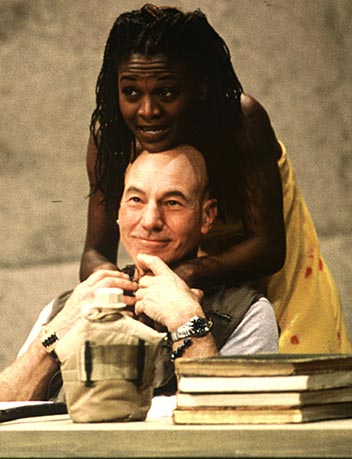
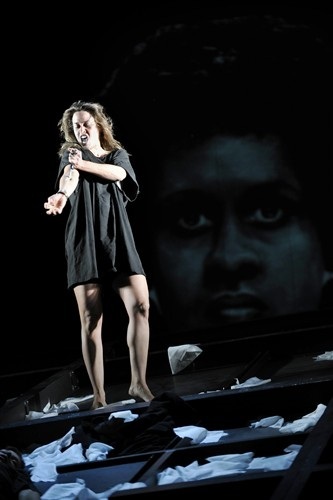 Speaking of foreign: A German production at the Deutsches Theatre in 2001 pushed the boundaries of the character by not only casting a white actor as Othello, but a female one. This more avant-garde production starring actress Susanne Wolff sees Wolff utter her lines in varying costumes progressing from a simple black-and-white shirt and pants ensemble to—believe it or not—a gorilla suit intended to show Othello’s shift from loving partner to a more animalistic creature bent on vengeance. Blogger/reviewer Andrew Haydon says about the production, “Okay, there are two headlines to choose from here: 1) I’ve just seen the best production of Othello I’ve ever seen. 2) I’ve just seen a production of Othello in which Othello is played by a white woman in a gorilla costume. My job, then, is to explain how (2) manages to be (1).”
Speaking of foreign: A German production at the Deutsches Theatre in 2001 pushed the boundaries of the character by not only casting a white actor as Othello, but a female one. This more avant-garde production starring actress Susanne Wolff sees Wolff utter her lines in varying costumes progressing from a simple black-and-white shirt and pants ensemble to—believe it or not—a gorilla suit intended to show Othello’s shift from loving partner to a more animalistic creature bent on vengeance. Blogger/reviewer Andrew Haydon says about the production, “Okay, there are two headlines to choose from here: 1) I’ve just seen the best production of Othello I’ve ever seen. 2) I’ve just seen a production of Othello in which Othello is played by a white woman in a gorilla costume. My job, then, is to explain how (2) manages to be (1).”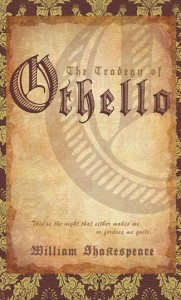
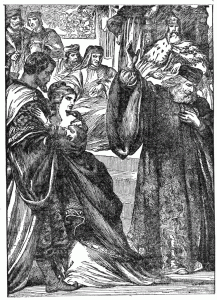
Thug Notes: Othello
Sex, booze, lies, and revenge–just another day on Cyprus! Salty language and adult themes ahead. Proceed with caution.
Comments Off on Thug Notes: Othello
Filed under AP Literature
Tagged as analysis, commentary, drama, Othello, Shakespeare